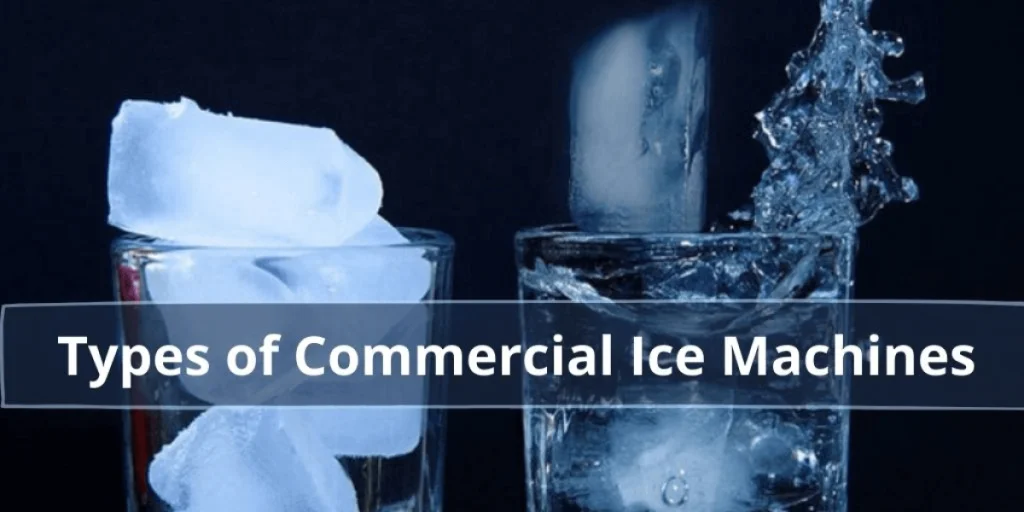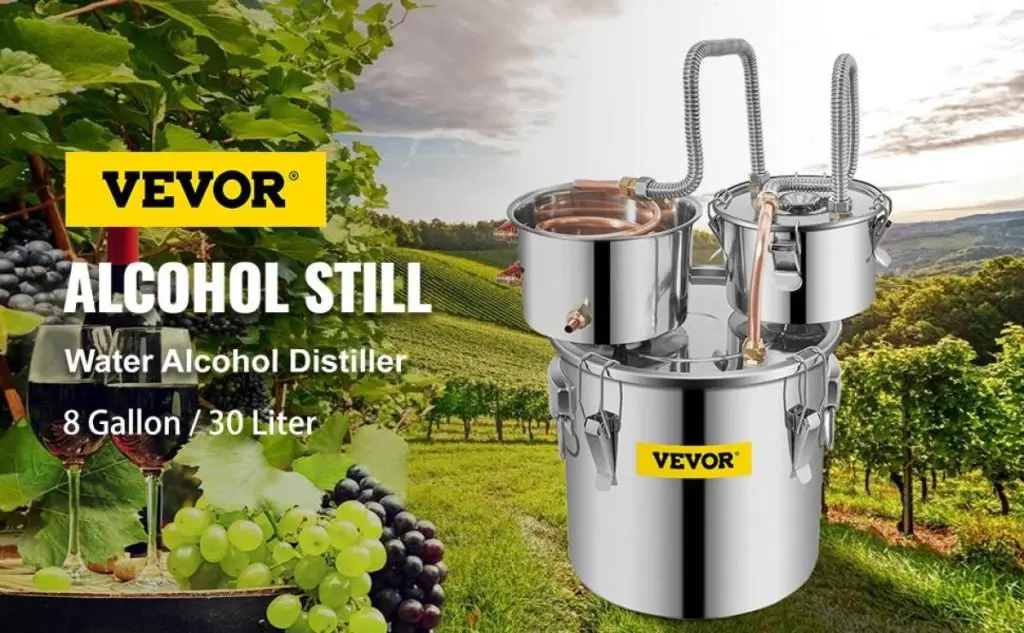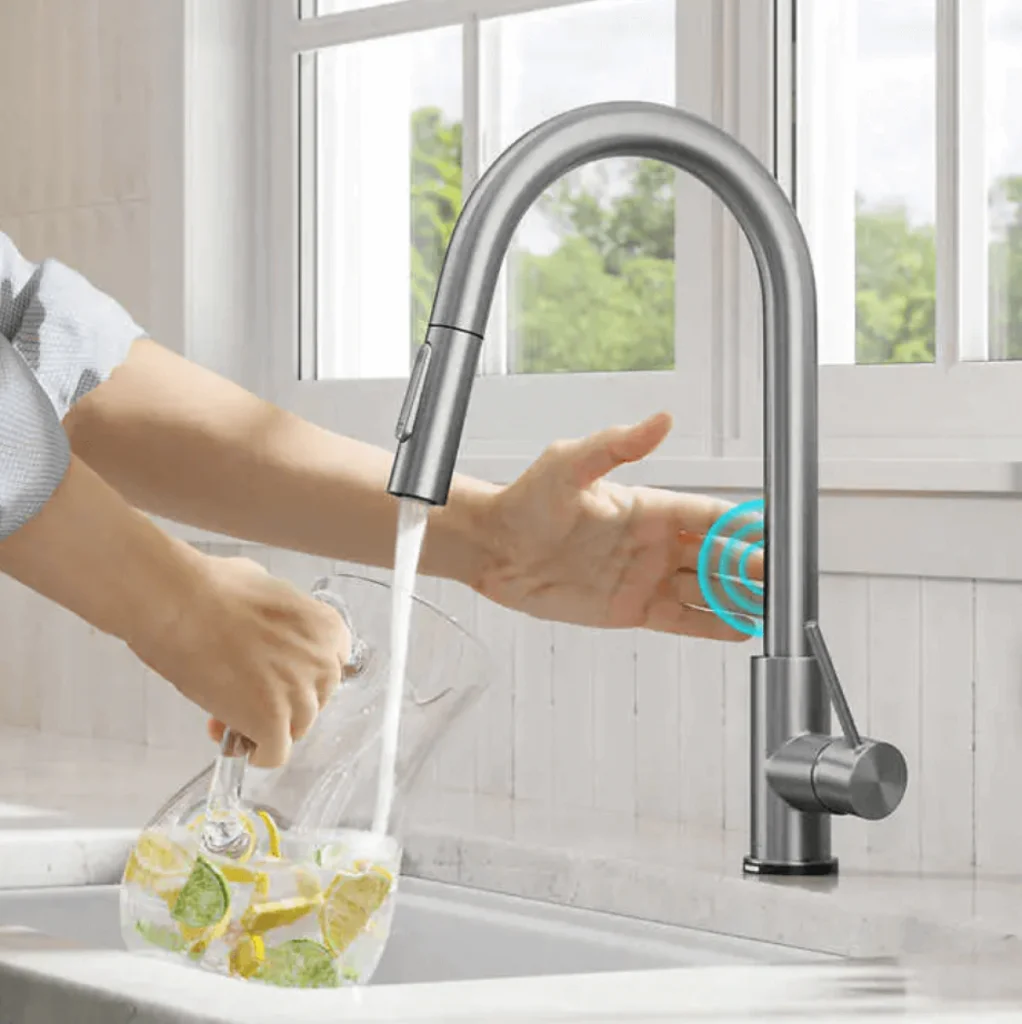Ice makers play a crucial role in providing ice for various purposes. From cooling drinks to preserving food. A wide range of ice maker ice types is available. Understanding the different types of ice and types of ice makers is essential when considering a purchase. Additionally, considering factors such as ice production and the functionality of different types of ice machines is important to ensure the right fit for your needs.
Among the reputable brands in the market, VEVOR stands out as a trusted name in ice maker technology. In this comprehensive buying guide, we will explore the different types of ice. We will shed light on the various options available in the market, including those offered by VEVOR. Whether you require ice cubes, flake ice, or nugget ice, understanding the characteristics and applications of these different types of ice is crucial for making an informed decision.
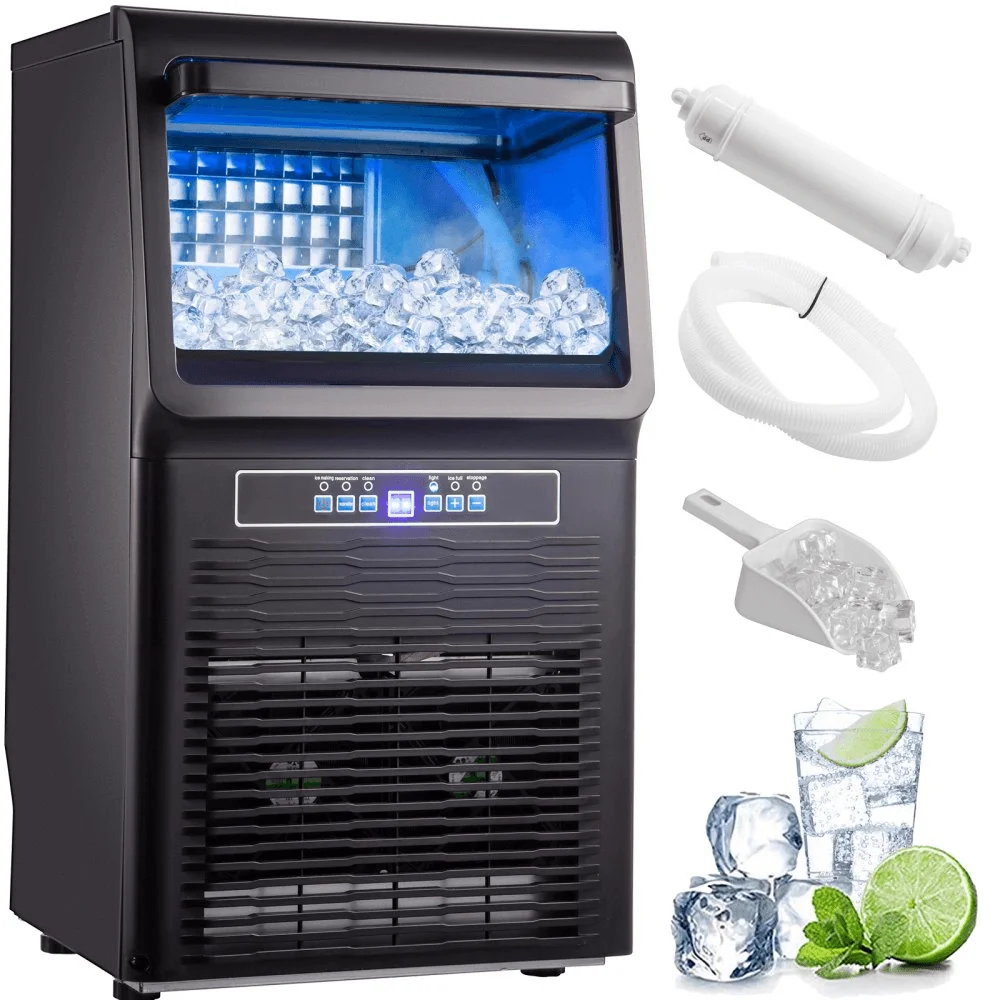
By delving into the intricacies of ice production and the capabilities of different types of ice machines, this guide aims to equip you with the knowledge needed to select the perfect ice maker for your specific requirements.
Types of Ice Makers
Struggling with the idea of choosing ice maker types? Do not worry. Understanding the types of ice machines is crucial. In this section, we’ll explore three key classifications: ice production and shape, cooling mechanisms, and ice storage and dispensing. You will gain insights into the diverse options offered by different ice machine types. Get ready to discover the possibilities that await.
Ice Production and Shape
Different ice maker types are designed to produce specific types of ice, each with its unique characteristics and applications. From traditional cube ice to flake ice and nugget ice, the shape and texture of the ice can impact its cooling capabilities and overall user experience. Understanding the ice production and shape options available will help you choose an ice maker that meets your specific needs and preferences. Let’s explore the fascinating world of ice production and shape.
1. Cube Ice Makers
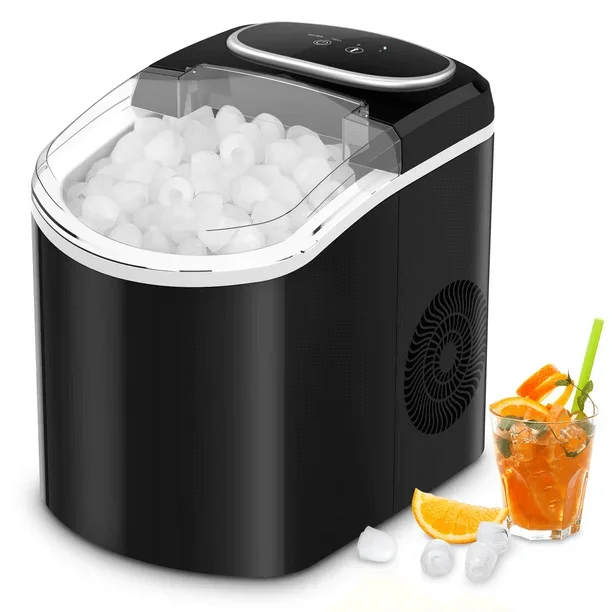
Cube ice makers produce full cubes and half cubes. These ice types are commonly used in various applications. These ice makers are versatile and suitable for a range of settings. For example, they are suitable for homes, restaurants, and convenience stores. The ice is commonly used for cooling drinks. They can be stored in an ice bin or ice storage bin for easy access. Cube ice makers offer reliable performance. They can produce a significant amount of ice to meet high-demand requirements.
2. Flake Ice Makers

Flake ice makers create flake ice. This ice type is widely used in industries such as seafood displays, salad bars, and healthcare settings. The unique shape and texture of flake ice make it ideal for preserving food and enhancing presentation. Flake ice can be stored in an ice storage bin or directly used for cooling drinks or products.
3. Nugget Ice Makers

Nugget ice makers produce nugget ice. Nugget ice is also known as “dice ice” or “chewable ice.” This type of ice has a soft texture. It is popular in restaurants, smoothie shops, and healthcare facilities. Nugget ice is suitable for cooling drinks.
It provides an enjoyable chewing experience. It can be stored in an ice bin or used in ice dispensers for convenient self-service.
4. Crescent Ice Makers

Crescent ice makers create ice in the shape of crescent moons. This unique shape allows for efficient cooling and easy displacement when dispensing drinks. Crescent ice is commonly used in commercial settings such as restaurants and bars.
5. Water Cooled Ice Makers

Water-cooled ice makers utilize a water pump to cool the condenser and maintain ice production. These ice makers are beneficial in environments where air-cooled models may not be suitable due to limited ventilation or noise concerns.
Ice Machine Types Cooling Mechanisms
Ice machines employ different cooling mechanisms to produce ice. Understanding the ice maker ice types and the various ice machine types available is essential when considering your specific needs for ice production. Let’s explore the different cooling mechanisms utilized by ice machines:
1. Air-Cooled Ice Machines

Air-cooled ice machines rely on ambient air for cooling the refrigeration system. They are commonly used and offer ease of installation, energy efficiency, and reduced water consumption compared to water cooled models.
2. Water Cooled Ice Machines
Water cooled ice machines utilize a water pump to cool the condenser. These machines are suitable for environments where air-cooled models may not be practical due to limited ventilation or noise concerns.
3. Combination Ice and Water Dispensers
Some ice machines are designed as combination units that not only produce ice but also dispense water. These machines offer the convenience of having both ice and water readily available, making them ideal for self-service environments.
4. Modular Ice Machines

Modular ice machines are versatile and can produce a large amount of ice to meet high-demand requirements. These machines require an additional ice bin or ice storage bin for storing the ice produced.
5. Countertop Ice Machines
Countertop ice machines are compact units that are designed for smaller-scale ice production. They are commonly used in offices, break rooms, or small businesses where a smaller quantity of ice is required.
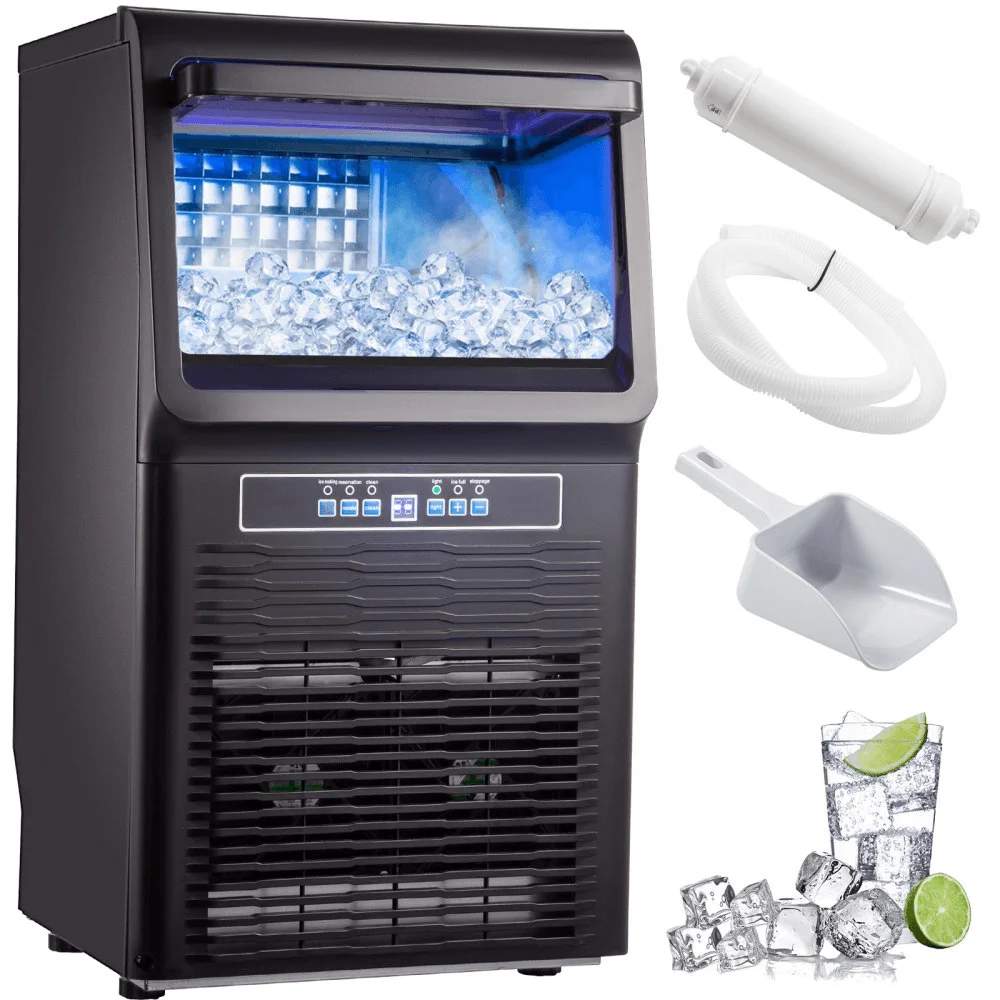
Ice Storage and Dispensing
ice machines also feature various methods of ice storage and dispensing. Understanding these options is important to ensure a seamless ice handling process. Let’s explore the different types of ice storage and dispensing methods commonly found in ice machines:
1. Ice Storage Bins
Ice storage bins are containers designed to hold a certain capacity of ice. They can accommodate different ice types, including full cubes or dice ice, and are easily accessible for ice retrieval. These bins require periodic filling with water to fill to maintain a steady supply of ice.
2. Ice Dispensers
Ice dispensers are units that offer convenient access to ice in self-service settings. They come in various configurations, such as countertop or freestanding models. Ice dispensers typically utilize an ice tray mechanism to dispense the desired amount of ice, ensuring ease of use and minimizing ice waste.
3. Water Cooled Ice Machines with Integrated Storage
Some ice machines are designed with built-in ice storage, eliminating the need for separate ice bins. These units can produce and store ice while utilizing a water-cooled system to maintain optimal ice production and quality.
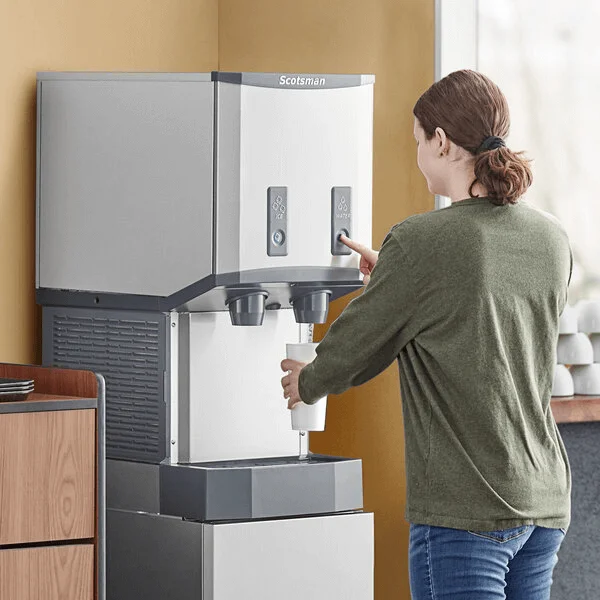
Understanding the different options for ice storage and dispensing allows you to choose an ice machine that fits your specific needs. Whether you require a convenient ice dispenser for self-service applications or an integrated storage solution, considering factors like ice type, water usage for filling, and the utilization of water-cooled systems can help you make an informed decision.
Factors to Consider When Buying an Ice Maker
There are several factors to ensure you choose the right one for your needs. From considering the various ice maker ice types and different types of ice machines available to evaluating cooling mechanisms such as water-cooled systems, each factor plays a crucial role in determining the efficiency and suitability of the ice maker.
1. Ice Production and Ice Types: Consider your specific ice production requirements and the different types of ice you need. Determine whether you require full cubes, dice ice, or other ice shapes based on your intended applications. Ensure the ice maker you choose can produce the desired ice type efficiently.
2. Cooling Mechanism: Evaluate the cooling mechanism of the ice maker. Options include water-cooled systems, which offer efficient cooling but require a water source to fill and proper drainage. Alternatively, air-cooled models are easier to install and operate but may have higher energy consumption.
3. Capacity and Ice Output: Assess the ice maker’s capacity and output. Consider the amount of ice you need to meet your demands, whether for residential use, small gatherings, or high-volume commercial settings. Ensure the ice maker can produce the required amount of ice efficiently and consistently.
4. Size and Installation Requirements: Take into account the available space for the ice maker. Consider the dimensions, whether it will fit on a countertop, under a bar, or in a designated area. Also, assess the installation requirements, including access to a water line for water to fill, drainage, and power source compatibility.
5. Maintenance and Durability: Evaluate the maintenance requirements of the ice maker. Consider factors such as cleaning frequency, filter replacement, and overall upkeep. Additionally, prioritize models with a reputation for durability and reliability, ensuring your investment in the ice maker is long-lasting.
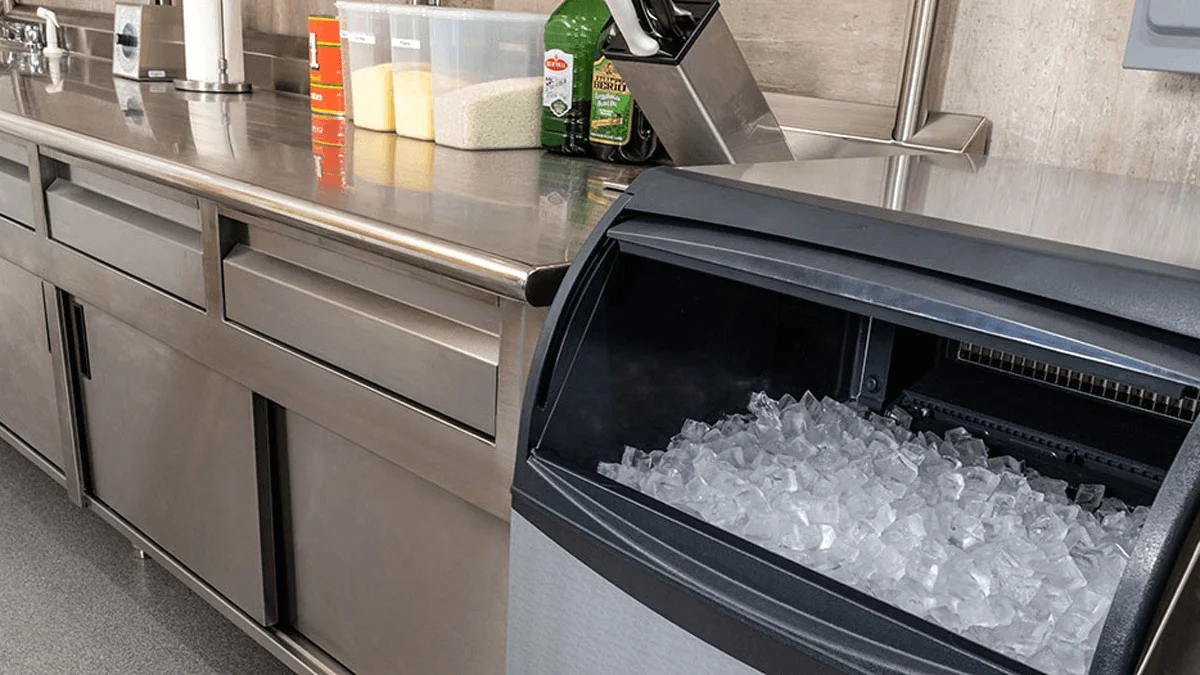
FAQs About Different Types of Ice Makers
1. Can I use different types of ice in the same ice maker?
It depends on the specific ice maker. Some models allow for different ice types to be produced using interchangeable molds or trays. However, it’s essential to check the manufacturer’s instructions and recommendations to ensure proper usage and avoid damaging the ice maker.
2. How often do I need to refill the ice tray?
The frequency of refilling the ice tray depends on your ice consumption and the capacity of the ice maker. Some ice makers automatically refill the ice tray as needed, while others may require manual refilling. It’s important to monitor the ice level regularly and follow the instructions provided by the manufacturer.
3. What are the benefits of an ice maker with a built-in water pump?
An ice maker with a built-in water pump eliminates the need for manual water filling. It connects directly to a water source, ensuring a continuous supply of water for ice production. This feature is convenient, especially in high-demand environments where frequent refilling of the water reservoir or ice tray may be impractical. However, it’s important to ensure proper installation and maintenance to avoid water supply issues.
Conclusion
When buying an ice maker, consider factors such as ice production, cooling mechanism, capacity, size, and maintenance. Understanding the different types of ice and their applications is essential. By making an informed decision, you can select an ice maker that meets your needs and enjoy a reliable supply of ice for various purposes.

